The future of generic pharmaceuticals isn’t about copying old pills anymore. It’s about reimagining them. Generic combinations - fixed-dose blends, drug-device systems, and smart-release formulations - are reshaping how we treat chronic conditions, and they’re doing it without the branded drug price tag. Unlike simple generics that just match a brand-name drug’s active ingredient, these advanced versions improve how the medicine works in your body: longer-lasting effects, fewer pills per day, better absorption, or even built-in delivery tools like auto-injectors. This isn’t just innovation for innovation’s sake. It’s a survival strategy for generic manufacturers facing crushing price drops and shrinking margins.
Why Generic Combinations Are Different
Think of a traditional generic as a photocopy. It has the same active ingredient, same dose, same shape. It works - and it’s cheap. But after a few months on the market, the price crashes by 80% or more. That’s the reality for most simple generics. Now imagine a generic version of a drug that’s been reformulated to release slowly over 24 hours, or one that combines two medications into a single pill to reduce pill burden. These are generic combinations, sometimes called super generics. They’re not just copies. They’re upgrades. Take bupropion, an antidepressant and smoking cessation aid. The original branded version, Wellbutrin XL, had a special extended-release coating. When it went generic, many companies made basic versions that didn’t match the release profile. But Teva’s Budeprion XL? It replicated the extended-release tech. That version sold for nearly $187 million annually before competition kicked in. Meanwhile, the basic generics combined only brought in $42 million. The difference? One was a true improvement. The other was just a copy.How They’re Made - And Why It’s Hard
Creating a generic combination isn’t like mixing two powders in a bowl. It’s engineering. For an extended-release tablet, manufacturers use techniques like hot-melt extrusion or lipid-based systems to control how the drug dissolves in your gut. For inhalers or auto-injectors, they’re combining a drug with a medical device - which means they have to satisfy two sets of rules at once. The FDA treats these as combination products. That means they fall under 21 CFR Part 4, and the Office of Combination Products decides whether the drug or the device is the primary mode of action. That single decision determines which division reviews it - and how long it takes. A simple oral FDC might take 24 months to approve. A complex inhaler combo? That can stretch to 42 months. And the data required? Up to 50% more than a standard generic. Even bioequivalence gets tricky. For a regular pill, you just check blood levels over 24 hours. For a modified-release version, you need population pharmacokinetic modeling, multiple time points, and dissolution profiles that match the original within 10% f2 similarity. That’s not something every generic company can do. Only those with advanced labs, precision equipment (±2% tolerance on ingredient ratios), and deep formulation expertise can compete.Regulatory Divide: U.S. vs. Europe
The U.S. is leading the charge. The FDA has been actively modernizing its review process. In October 2025, it launched a pilot program that fast-tracks applications for generic combinations made entirely in the U.S. That could cut approval time by 3 to 6 months. The goal? Bring more of these products to market faster - and keep manufacturing domestic. Europe? Not so much. The European Medicines Agency (EMA) has approved just 12 complex generic combinations through Q1 2025. The U.S. has approved 37. Why the gap? The EMA takes a stricter view on what counts as “therapeutically equivalent.” They demand near-identical performance across all patient types. The FDA, while still rigorous, allows more flexibility in proving equivalence - especially when the product improves adherence or safety. This regulatory split creates real-world consequences. A company might launch a complex generic in the U.S. but delay in Europe because the path is unclear. That means patients in the EU might wait years longer to get a better version of a drug they’re already taking.
Market Drivers: Patent Expirations and Profit Pressure
The biggest force behind this shift? Money - or the lack of it. Between 2025 and 2030, over $217 billion in annual branded drug sales will lose patent protection. That includes huge targets like Trelegy Ellipta (a three-drug inhaler for COPD with $2.8 billion in 2024 sales) and Austedo (for movement disorders, $1.2 billion). These aren’t small drugs. They’re blockbuster medicines with complex formulations - perfect candidates for super generics. But here’s the catch: traditional generics capture 90% of U.S. prescriptions but less than 20% of total drug spending. That’s because they’re so cheap. Generic manufacturers can’t survive on pennies per pill. They need higher-value products. That’s where combinations come in. While a standard generic might lose 90% of its price within two years, a complex combination holds onto 40-60% of its initial price for five years. That’s the difference between a 5% margin and a 30% margin. For companies like Viatris, Sandoz, and Aspen Pharmacare, this isn’t optional. It’s the only way to stay profitable.Where the Growth Is - and Who’s Winning
Not all combination products are created equal. The market is split into three tiers:- Simple combinations (like two-pill-in-one tablets): 62% of current volume, growing at 5.2% CAGR.
- Complex combinations (inhalers, injectables, extended-release): 28% of volume, growing at 9.8% CAGR.
- Super-complex combinations (nanoparticles, multi-component systems): 10% of volume, growing at 12.7% CAGR.
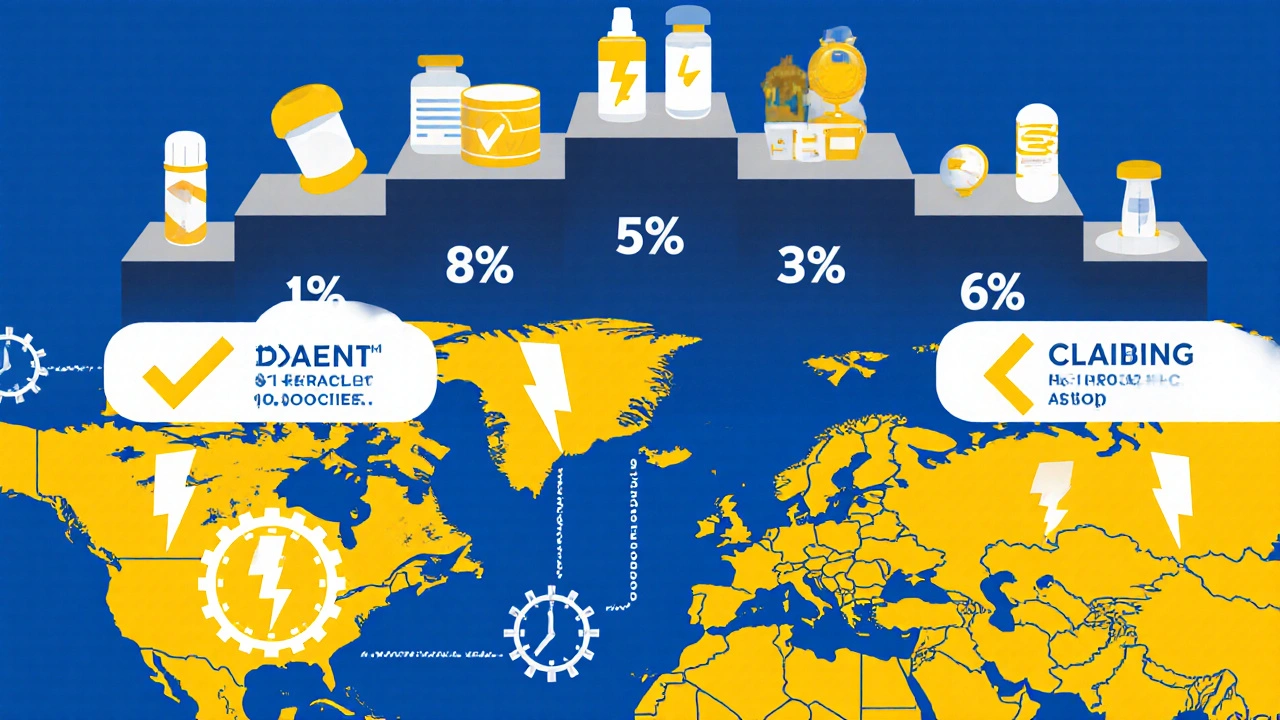
The Risks - And the Stakes
This isn’t all smooth sailing. The biggest risk? Regulatory uncertainty. Dr. Aaron Kesselheim from Harvard wrote in NEJM 2025 that the definition of “therapeutic equivalence” for complex generics is still vague. What if a modified-release version works differently in elderly patients? Or in people with kidney disease? The FDA hasn’t fully mapped out how to test for that. That’s a safety gap. And then there’s the cost. Developing a simple generic costs $1-5 million. A complex combination? $15-50 million. That’s a huge barrier for small players. Only big companies with deep pockets can play here. But the bigger risk? If too many companies jump in too fast, margins could collapse. IQVIA predicts the U.S. generic market will grow 11.4% in 2025 - a big jump from 4.9% in 2024. But Morningstar warns that without real differentiation, pricing pressure could wipe out 30% of margins over the next decade.What’s Next?
The future of generics isn’t about more pills. It’s about smarter ones. We’re already seeing the next wave: generic semaglutide combinations. Semaglutide (Ozempic, Wegovy) is a $100+ billion market. Now, companies are working on fixed-dose versions that combine it with metformin or other diabetes drugs - all in one injection. That’s not just a combination. It’s a new standard of care. Regulatory harmonization is also coming. The ICH Q14 guidelines, finalized in June 2025, give global standards for testing complex products. That means less confusion, faster approvals, and more consistent quality worldwide. By 2030, experts predict super generics will make up 35-40% of the total generics market value. That’s not a trend. It’s a transformation. The companies that succeed won’t be the ones making the cheapest pills. They’ll be the ones making the best ones - the ones that help patients take fewer pills, feel better, and stick with their treatment. Generic combinations aren’t just the future. They’re the only way the generic industry has a future at all.What exactly is a generic combination?
A generic combination is a pharmaceutical product that combines two or more active ingredients into a single dosage form - like a pill, inhaler, or injection - and is developed after the original branded version’s patent expires. Unlike simple generics, which copy just the active ingredient, generic combinations improve on the original by adding features like extended-release technology, device integration (e.g., auto-injectors), or optimized dosing schedules to enhance effectiveness, safety, or patient adherence.
Why are generic combinations more expensive to develop than regular generics?
Developing a generic combination requires significantly more data and testing. While a standard generic needs to prove pharmaceutical and bioequivalence, a combination product must also demonstrate that its delivery system - whether it’s an extended-release coating, a complex inhaler, or a nanoparticle carrier - works the same way as the original. This often requires additional clinical trials, specialized pharmacokinetic studies, and advanced manufacturing controls. As a result, development costs range from $15 million to $50 million, compared to $1-5 million for a simple generic.
Do generic combinations work as well as branded versions?
Yes - if they’re properly developed and approved. The FDA requires that generic combinations demonstrate therapeutic equivalence to the reference product, meaning they deliver the same clinical benefit. For example, a generic version of a three-drug inhaler must show it delivers the same amount of each drug to the lungs at the same rate as the branded version. Some studies have shown improved patient outcomes with combinations due to better adherence, not because the drugs are stronger, but because they’re easier to take.
Why is the U.S. ahead of Europe in approving these products?
The FDA has taken a more flexible, innovation-friendly approach to evaluating complex generics, especially those that improve adherence or reduce side effects. The EMA, by contrast, demands near-identical performance across all patient populations, which makes approval harder for products with novel delivery systems. The FDA also launched a pilot program in October 2025 to speed up reviews for U.S.-made products, while the EMA has been slower to adapt its guidelines to modern formulation technologies.
Are generic combinations covered by insurance?
Yes, most U.S. insurance plans cover generic combinations, especially when they’re listed on formularies as preferred alternatives to branded drugs. Because they’re still generics, they typically cost less than the original branded product - even if they’re priced higher than simple generics. Many payers encourage their use because they reduce overall healthcare costs by improving adherence and lowering hospitalization rates.
What’s the biggest challenge facing generic combination manufacturers today?
The biggest challenge is balancing innovation with profitability. Developing these products is expensive and time-consuming, and while they offer better margins than simple generics, the market is becoming crowded. Companies must invest heavily in R&D, manufacturing, and regulatory strategy just to enter the space. Those without the resources or expertise risk being left behind as larger players consolidate and push into higher-value, complex products.


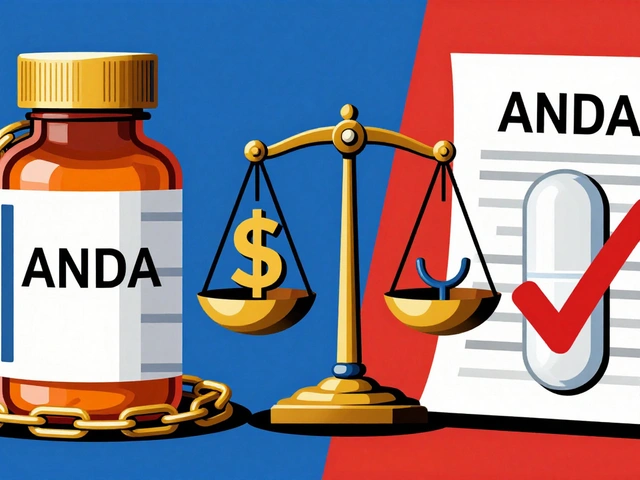
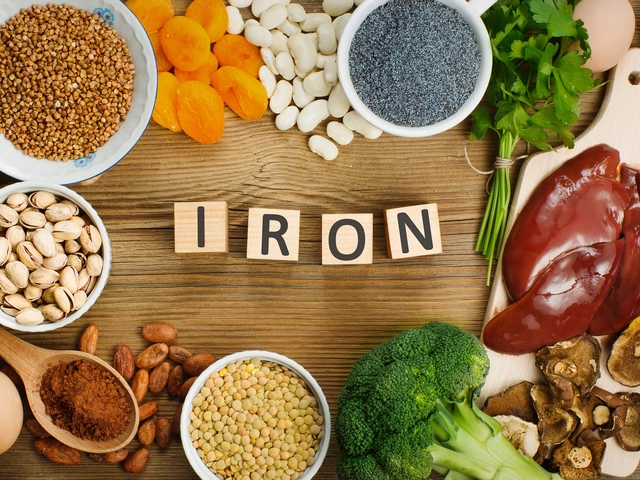
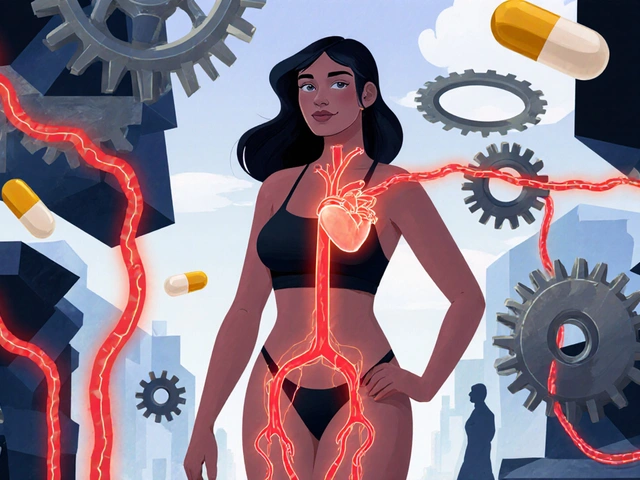
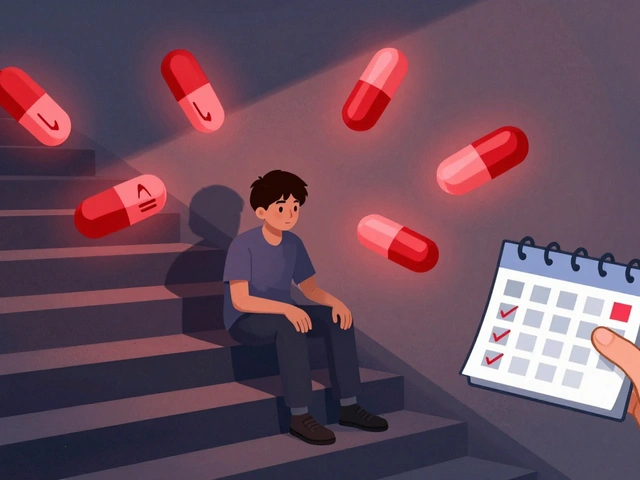


Chrisna Bronkhorst November 13, 2025
This whole super generic trend is just pharma playing chess while patients lose checkers. They're not fixing access, they're just making the same pills look fancy to charge more. The FDA's pilot program? More corporate welfare disguised as innovation.
Alex Ramos November 14, 2025
Actually, this is huge. I work in formulation dev and let me tell you - getting the f2 similarity within 10% on a hot-melt extruded tablet? That's engineering porn. 🤓 The labs needed? $5M minimum. Only the big boys can play now. But damn, when it works? Patients take one pill instead of four. Game changer.
Amie Wilde November 15, 2025
I've been on a combo med for depression. One pill instead of three? Life changing. No more forgetting half my meds. Seriously, why isn't this the norm already?
edgar popa November 16, 2025
simple generics are dead. long live the super generics. we need this. no more 5 pill a day regimens. my grandpa thanks you.
Erica Cruz November 16, 2025
Let’s be real: this is just brand-name pharma’s revenge. They lost the patent war, so now they’re rebranding their old drugs as ‘innovative’ to jack up prices again. The FDA is complicit. And patients? Still paying more than they should.
Shante Ajadeen November 17, 2025
This is actually really hopeful. I know people who give up on meds because the regimen is too complicated. If one pill helps them stick with it? That’s a win. Even if it costs a bit more upfront, it saves ER visits and hospital stays. Win-win.
Mark Rutkowski November 18, 2025
There’s a quiet revolution here, and nobody’s talking about the philosophy behind it. We used to treat medicine as a commodity - interchangeable, disposable, cheap. Now we’re starting to treat it as a *experience* - how it feels, how it fits into life. The pill isn’t just chemistry anymore. It’s dignity. It’s autonomy. It’s the quiet act of showing up for yourself, one less pill at a time. That’s not innovation. That’s evolution.
Gary Hattis November 20, 2025
Just got back from a trip to India. Saw a local generic maker trying to copy a US combo inhaler. They didn’t have the equipment to hit ±2% tolerance on the API. The patient got the drug, sure. But the delivery? Inconsistent. That’s why global harmonization matters. We can’t have a two-tier system where your health depends on your zip code. This isn’t just business - it’s global justice.
Deepa Lakshminarasimhan November 21, 2025
They say this is about patient care. But I’ve seen the paperwork. These combo drugs are being pushed by the same companies that flooded the market with opioids. They’re just switching products. The FDA’s pilot program? Probably a backdoor to let them skip safety reviews. Wake up. This isn’t progress - it’s a rebrand for profit.
Alyssa Lopez November 21, 2025
US manufacturing > EU bureaucracy. We build the tech, we make the pills, we control the supply chain. Why the hell are we letting Europe dictate our meds? FDA’s pilot program is the only thing keeping this industry alive. If you hate super generics, you hate American innovation. #MakeGenericsGreatAgain
Eve Miller November 23, 2025
The term 'super generic' is misleading and ethically dubious. These are not generics - they are modified new chemical entities. By labeling them as 'generic,' manufacturers exploit regulatory loopholes to bypass clinical trials and maintain price premiums under false pretenses. This is deceptive marketing disguised as innovation.
Johnson Abraham November 25, 2025
bro why are we even talking about this? it's just pills. one pill two pill. who cares. the real problem is insulin is still $300. this combo stuff is just pharma distraction tactics. 🤡
Alex Ramos November 26, 2025
To the guy above me - you’re right about insulin. But this? This is the only path forward for the generic industry to survive. If we don’t make these complex products, the whole supply chain collapses. No generics = no access. So yeah, we’re fixing one broken system by building another. It’s messy. But it’s real.